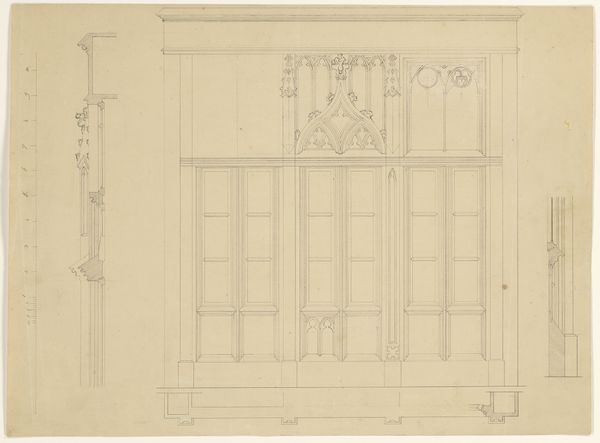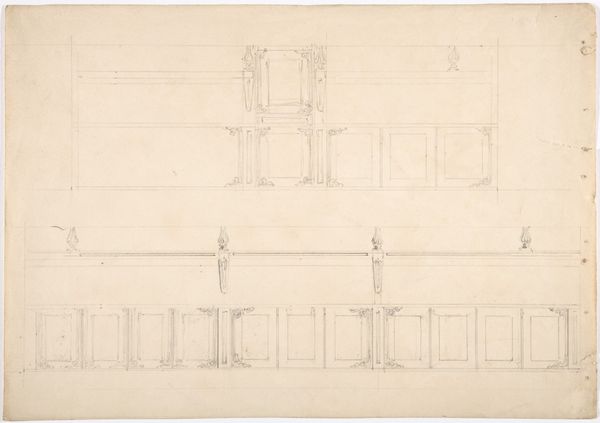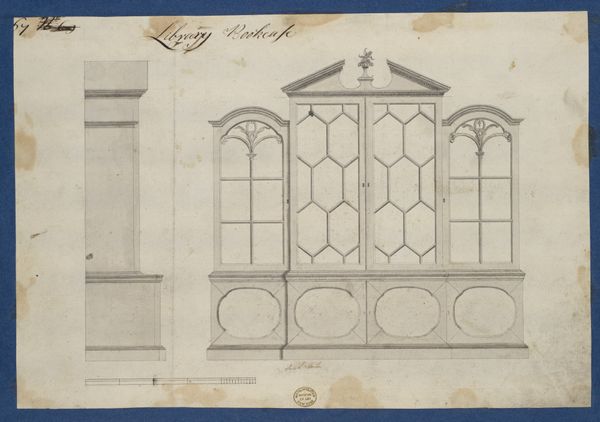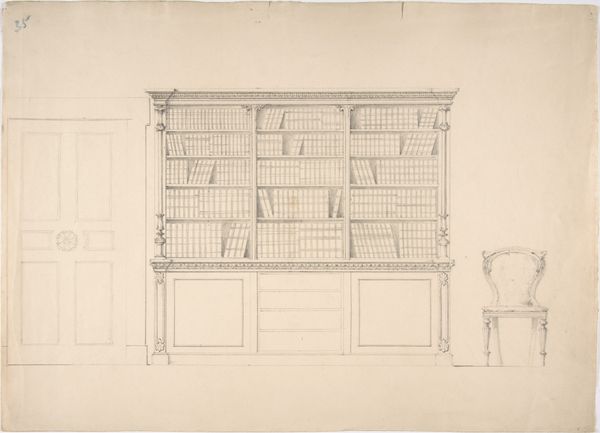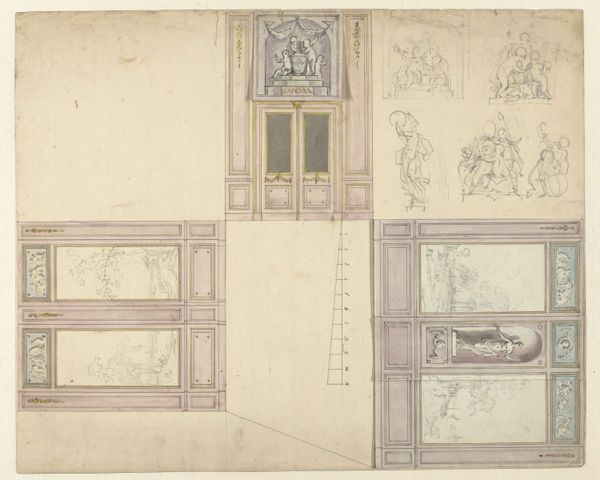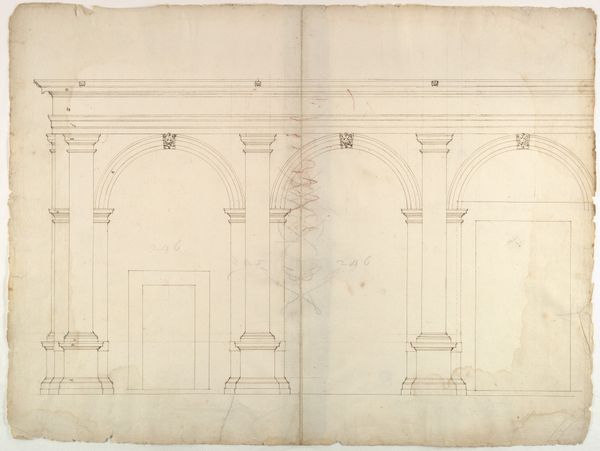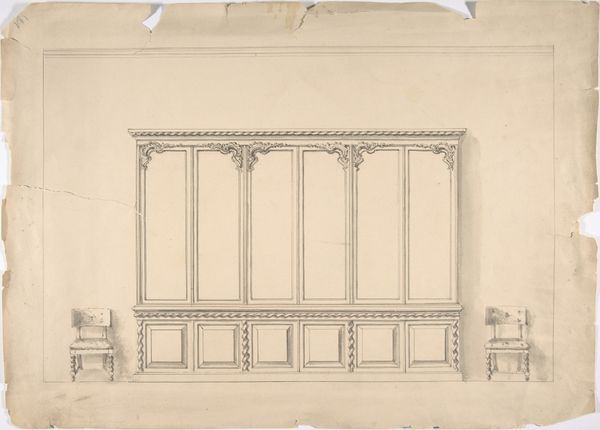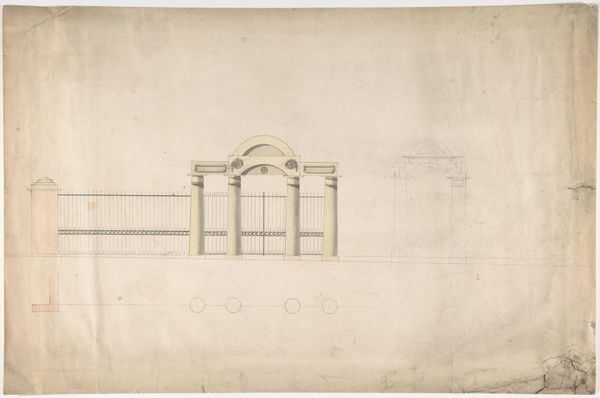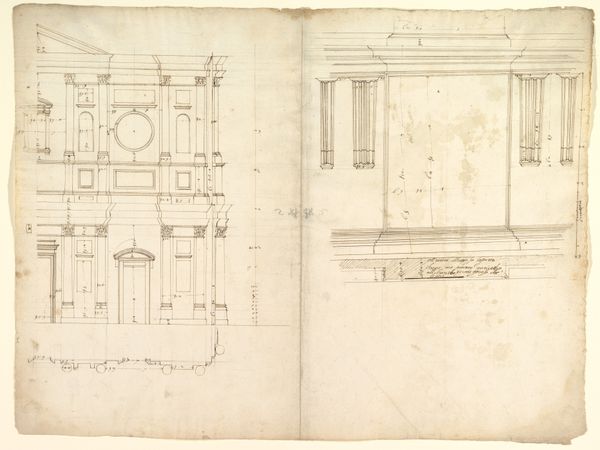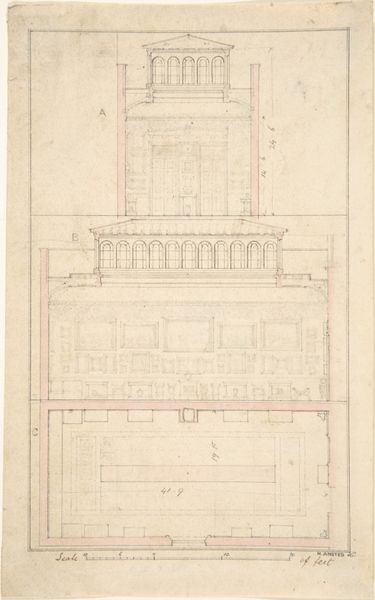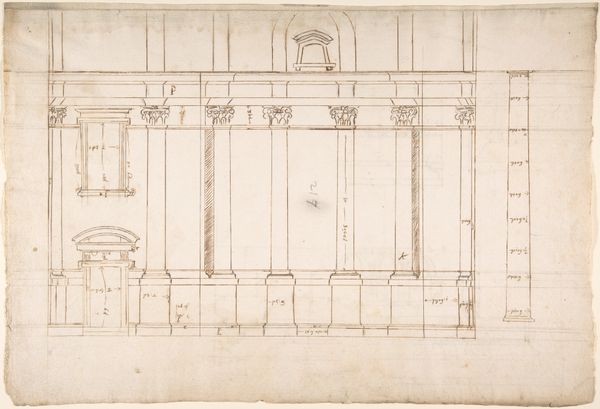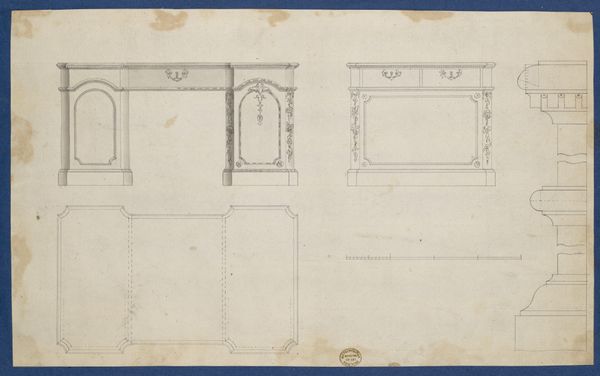
drawing, pencil, architecture
#
drawing
#
neoclacissism
#
etching
#
pencil
#
architecture
Dimensions: 400 mm (height) x 490 mm (width) (bladmaal)
G.F. Hetsch made this drawing of a dining room wall at Valhøj, Denmark, using pencil on paper. Hetsch’s design illustrates how the aesthetic of neoclassicism served to reinforce social hierarchies in 19th-century Danish culture. The symmetrical arrangement of doors, windows, and panels, together with the classical busts lining the top, evokes a sense of order and control characteristic of the period. Neoclassicism became the style of choice for the bourgeois class seeking to emulate the grandeur and stability of the aristocracy. The precision of the drawing itself suggests the importance of planning and execution in achieving this desired effect. This was a period in which artists were under increasing pressure to produce work that was both aesthetically pleasing and socially relevant. To further understand the significance of this drawing, one might consult architectural treatises and design manuals from the time. These sources can help us to understand the values and aspirations of the society that produced it. Ultimately, Hetsch’s design reveals the cultural and institutional forces shaping artistic production in 19th-century Denmark.
Comments
No comments
Be the first to comment and join the conversation on the ultimate creative platform.
